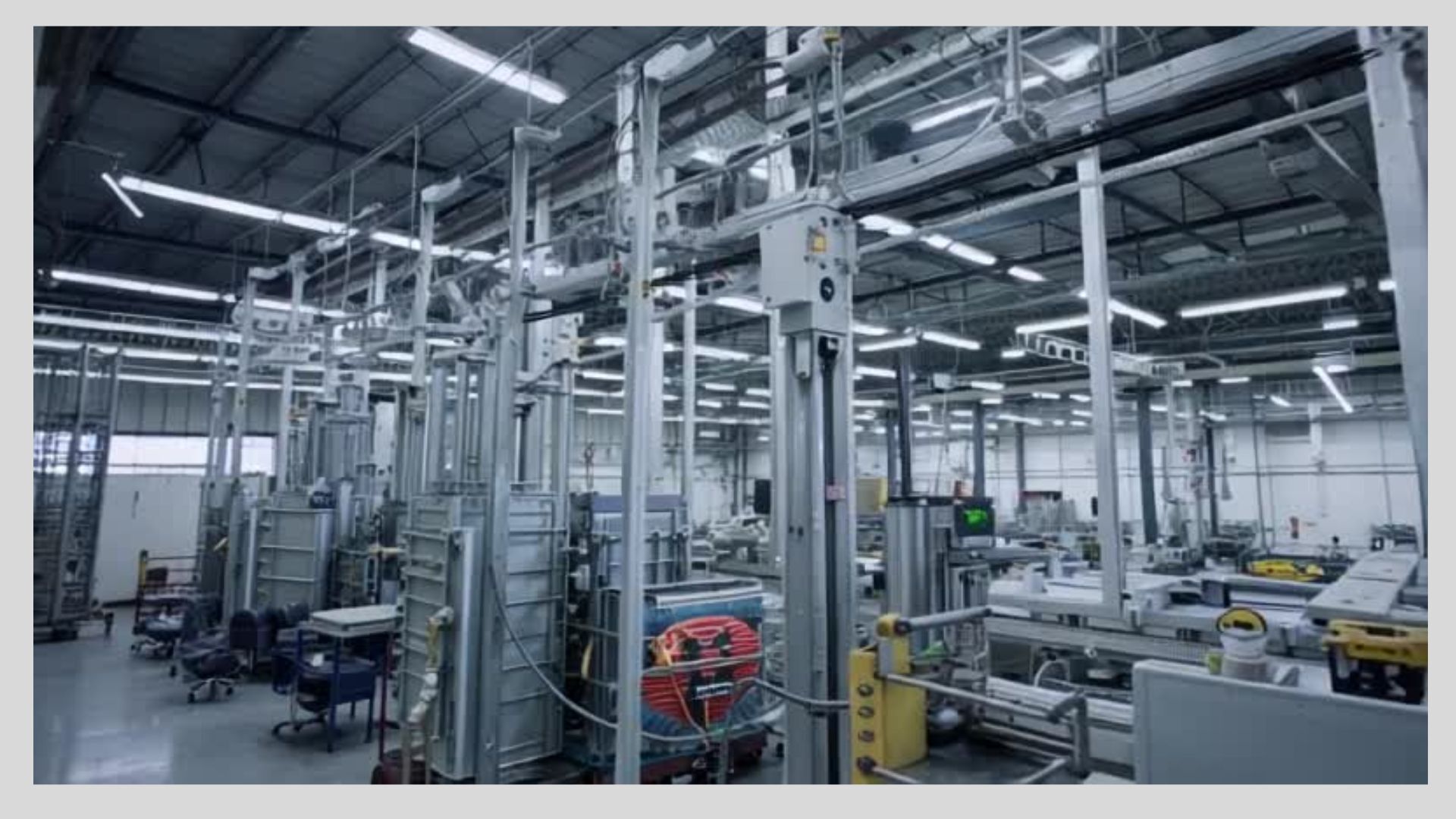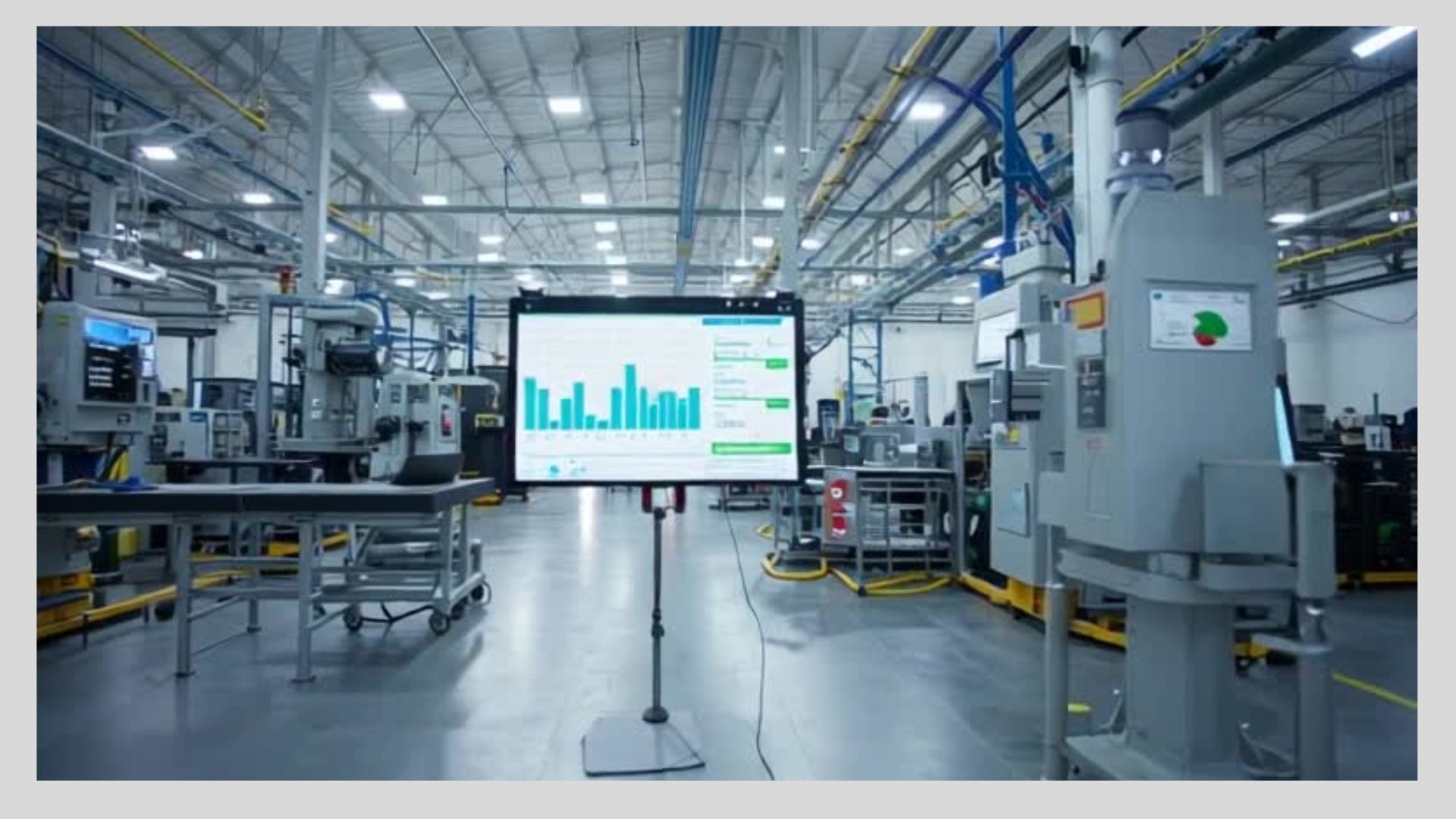- Reliability Edge Weekly Newsletter by Hamiltonian Systems
- Posts
- Reliability Edge Weekly Reliability Pulse
Reliability Edge Weekly Reliability Pulse
The newsletter for reliability and maintenance engineers and IT leaders, to improve the quality of their asset and MRO data to achieve excellence in manufacturing, published by Hamiltonian Systems. Unified data management & more...


Reliability Edge on the week’s Reliability Pulse keeps you current on data, MRO & AI.

“Reliability isn’t built in the spotlight. It’s earned in the quiet moments no one sees—when the data is cleaned, the bolts are checked, and the failure that never happened goes unnoticed.”
— Ravi Venkatraman, President, Hamiltonian Systems

Streamlined Data for Operational Insights

Operational Continuity Starts with Clarity
Why Operational Continuity Starts with Clarity
In high-pressure industrial environments, a five-minute delay can mean a five-figure loss. What separates resilient operations from reactive ones? Clear, trusted, and accessible data.
The Case for Streamlined Data Systems
Reliable operations hinge on how quickly teams can answer questions like:
What looks like it could fail, and how can we prevent it?
Is this asset performing as expected?
Where are we spending the most on maintenance?
When data lives in silos—or worse, is outdated or incomplete—decision-making becomes guesswork. That’s a recipe for downtime.
Key Benefits of Streamlined Data
✅ Faster Response Times
Well-structured data enables automated alerts and root cause tracing in minutes, not hours.
✅ Increased Alignment Across Teams
With shared visibility, operations, maintenance, and leadership can act from the same page.
✅ Better Forecasting and Inventory Control
Accurate histories and real-time feeds help optimize spare parts, reduce stockouts, and prevent over-ordering.
✅ Fewer Surprises
Anomalies, degradation, and asset drift become visible before they cause failure.
Build Long-term Data Resilience by Design
To improve resilience through data, focus on:
Eliminating duplicate or dirty records in CMMS/EAM systems
Linking sensor feeds to failure mode libraries and cost data
Using dashboards to drive daily standups and planning meetings
Training teams to treat data like a production asset—because it is
Final Thought
As we close this month’s theme on Enhancing Operational Resilience, remember this: You don’t just need more data—you need smarter data. Clear metrics aren’t just technical wins. They’re operational armor.
References
Chin, A. T., & Wong, K. Y. (2022). Data quality in maintenance management systems: A key enabler for operational performance. Journal of Industrial Engineering, 45(3), 222–234. https://doi.org/10.1016/j.jie.2022.03.007
Liyanage, J. P., & Kumar, U. (2021). Resilience and data governance in asset-intensive industries. International Journal of Reliability Engineering and System Safety, 210, 107480. https://doi.org/10.1016/j.ress.2021.107480
Optimized Maintenance for Uninterrupted Performance

Optimized Maintenance for Uninterrupted Performance
Unplanned Downtime Is a Symptom—Not the Problem
Every time an asset fails unexpectedly, it’s tempting to blame the equipment. But the real issue is often the absence of a strategic maintenance plan. Reliability doesn’t come from reaction—it comes from rhythm.
What Optimized Maintenance Really Means
It’s not about doing more maintenance. It’s about doing the right maintenance at the right time, guided by risk, performance, and data. Strategic planning connects asset criticality with task prioritization to keep performance smooth and interruptions rare.
Benefits of Strategic Maintenance Planning
🔁 Predictability
Knowing what’s scheduled—and what’s not—eliminates chaos and protects throughput.
📈 Improved Asset Life
Assets maintained at the right intervals experience less wear and fewer premature failures.
💲 Cost Control
Proactive strategies reduce emergency parts, labor overtime, and production stoppages.
👷 Safer Work Environment
Planned work reduces unexpected hazards and supports compliance with safety protocols.
Planning Strategies That Drive Continuity
To maintain uninterrupted performance, leading plants focus on:
Asset Risk / Criticality ranking to prioritize planning efforts
Calendarized PM programs refined by real-time condition data
Work order analytics to identify repetitive or obsolete tasks
Feedback loops from technicians to continuously improve plans
Pro Tip: Link Planning to Outcomes
Avoid planning for planning’s sake. Instead, tie your schedule to measurable KPIs:
Production Loss Attributed to Maintenance
MTBF by asset class
Risk Reduction Index (Using FMEA)
Maintenance cost as % of asset replacement value (ARV)
Final Thought
You don’t need more work orders—you need smarter ones. The best reliability teams use planning not just to organize work, but to protect performance. Optimized maintenance isn’t just a task—it’s a commitment to operational calm.
References
Mobley, R. K. (2021). An Introduction to Predictive Maintenance (2nd ed.). Elsevier. https://doi.org/10.1016/C2013-0-16228-5
Wireman, T. (2020). Developing Performance Indicators for Managing Maintenance. Industrial Press.
Intelligent Systems for Enhanced Stability

Predictive Risk Management with Smart Tools
Stability Isn't Passive—It's Engineered
Stable operations don’t just happen. They’re designed. And in modern industrial environments, that design is increasingly powered by intelligent systems that see the future before failure arrives.
From advanced analytics to AI-powered alerts, today’s smart tools give reliability teams a strategic advantage: time to respond, to plan, and to prevent.
The Role of Intelligent Systems in Reliability
"Smart tools" aren't just dashboards and sensors. They're decision accelerators that sift through massive operational noise and surface actionable insight.
These systems:
Analyze vibration, temperature, and usage trends
Spot early signs of degradation or asset drift
Recommend interventions based on severity and risk
Key Benefits of Intelligent Systems
🧠 Foresight
Early warnings let teams act before disruption occurs—shifting from reactive to predictive.
📊 Risk-Based Prioritization
Not all alerts are equal. Intelligent systems rank issues by criticality, guiding resource allocation.
📉 Reduced Maintenance Overload
By flagging only what matters, smart tools minimize unnecessary PMs and redundant checks.
⏱ Faster Incident Response
Integrated alerts and recommendations compress response times and eliminate manual guesswork.
Building Stability Through Smart Tech
Resilient plants are leveraging:
Condition-based monitoring (CBM) integrated with work order systems
AI/ML forecasting models tuned to equipment and process profiles
Digital twins for simulating and stress-testing operational scenarios
Integrated asset health dashboards to give leadership instant insight
Pro Tip: Combine Intelligence with Intuition
No system replaces a seasoned reliability engineer. But the best results happen when human expertise and machine foresight work side-by-side.
Final Thought
The future of reliability isn’t just digital—it’s intelligent. Smart systems don’t just report the past—they predict the future. And that foresight is your first line of defense in achieving true operational stability.
References
Lee, J., Lapira, E., Bagheri, B., & Kao, H. A. (2013). Recent advances and trends in predictive manufacturing systems in big data environment. Journal of Manufacturing Science and Engineering, 135(6), 061016. https://doi.org/10.1115/1.4026360
Cavalieri, S., & Pezzotta, G. (2012). Digitalization and intelligent maintenance systems. CIRP Annals, 61(2), 439–442. https://doi.org/10.1016/j.cirp.2012.03.101

Please answer a brief question and we will share the insights in next week.
From last week, the week of July 25th, on what should our company do to avoid reactive maintenance: the overwhelming majority answered “All of the above.(Use prescriptive maintenance tools, implement preventative maintenance schedules, and conduct failure mode and effects analysis.
Which of these would most improve your plant’s reliability today—if you had a magic wand? |

Real-world ridiculousness (or close enough) from the front lines of reliability
Heard during a morning meeting at a food processing plant:
Planner: “The AI flagged a bearing failure for next Thursday.”
Supervisor: “Perfect. That gives us time to pretend we saw it coming ourselves.”
Technician: “I’ll book the repair and my victory lap.”
In the age of intelligent systems, even maintenance has premonitions.
Just don’t forget to act impressed when the AI’s right—again.”
This newsletter provides best practices, strategies, techniques, insights and data from our ongoing research in short, concise articles.
By incorporating these tips and techniques into your routine, you can cultivate a operations that flourish throughout the year.
Until next time!
